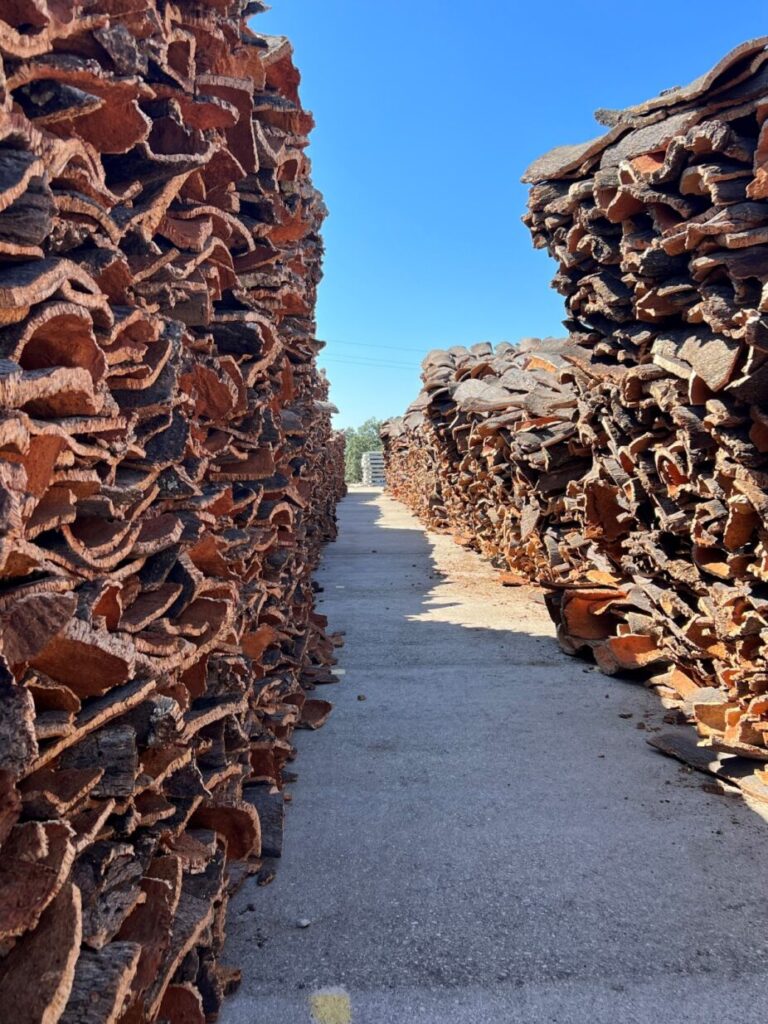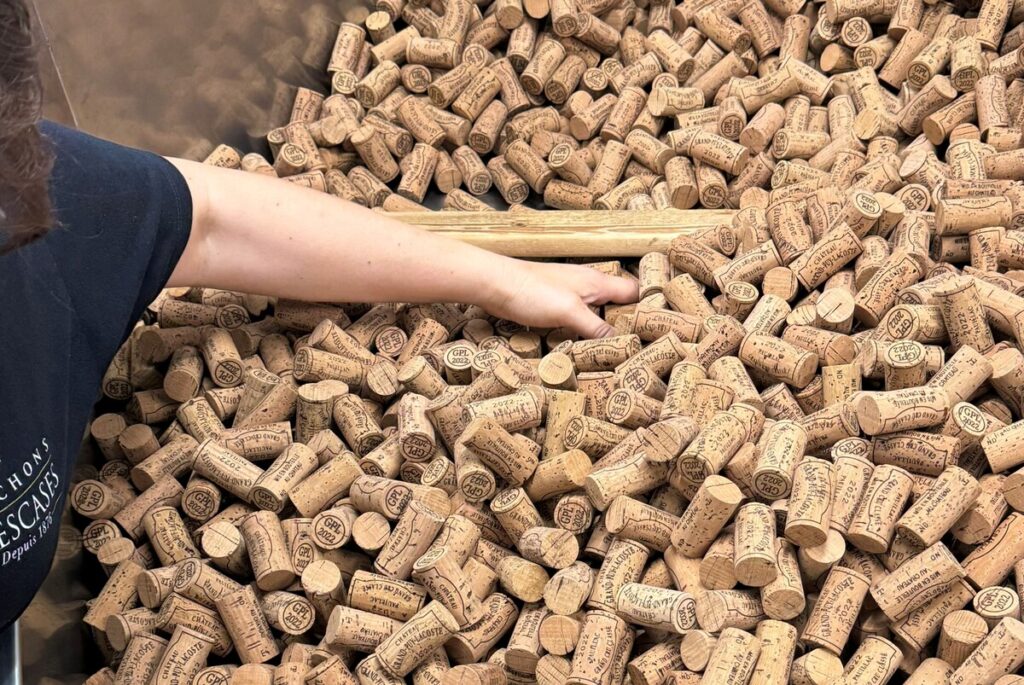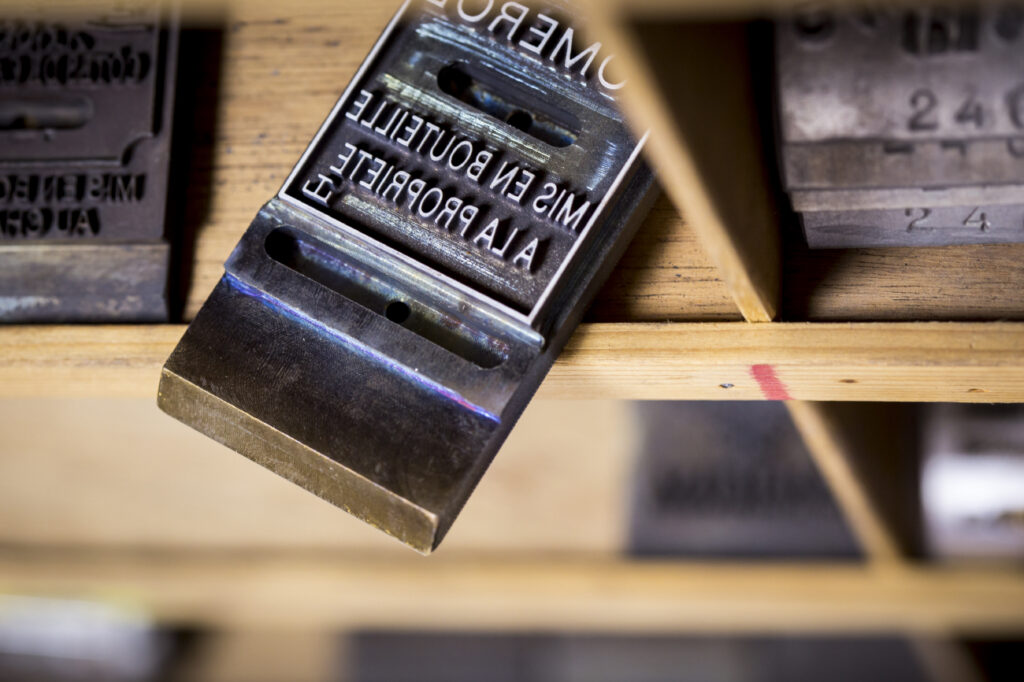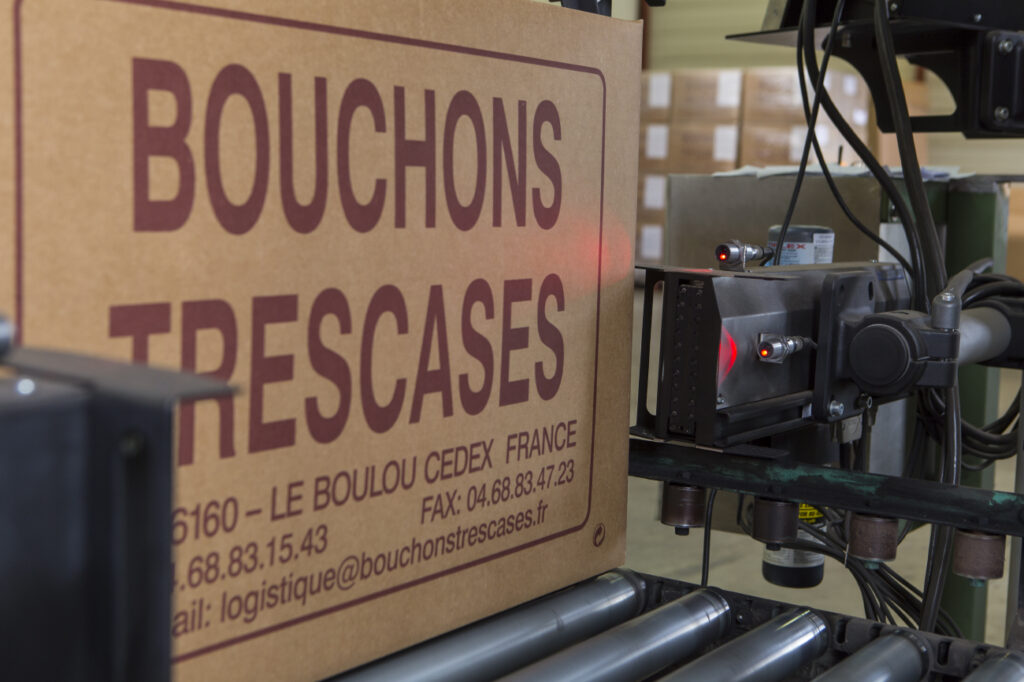Our manufacturing process is based on decades of know-how, tradition and expertise, ensuring that our cork stoppers meet the highest quality standards. From harvesting the cork oak bark to transforming it into corks, we do everything in our power to guarantee our customers exceptional quality.
From tree to bottle
- Lifting or debarking
The cork oak is a unique tree that regenerates naturally after each harvest of its bark.
Cork debarking (or leavening) is a manual, artisanal and delicate process. It takes 18 years after first emergence to obtain a bark that is ideal for producing cork of the highest quality.
📍 Portugal
- Rest period and drying on site
After debarking, the cork boards are carefully stacked and left to air dry for at least 6 months.
During this period, we carry out a meticulous sorting according to appearance and thickness, eliminating boards with major defects such as yellow stains, green cork or excess sap, as well as insect marks.
📍 Portugal

- Dynamic Boiling
Cork boiling involves immersing the boards in boiling water for one hour.
This step disinfects and cleans the cork, extracts water-soluble substances, increases its thickness, reduces its density and, as a result, makes it softer and more elastic.
📍 Portugal
- Murissage
The cork then undergoes a stabilization period lasting 2 to 3 weeks.
This maturing stage is essential to ensure the cork’s regularity and enable it to acquire the ideal consistency needed for the subsequent processing stages, leading to the creation of the final product: the cork stopper.
📍 Portugal
5. Tubing
Tubing is a manual or semi-automatic operation in which cork strips are perforated using a tubing machine.
This step enables us to shape cylindrical caps to the specific dimensions of each customer. Any excess material is transformed into cork granules, reducing waste to a minimum.
📍 Portugal
- First sorting
This stage enables the finished corks to be sorted into classes according to their quality, by automatic control of the cork surface.
The corks are visually sorted to eliminate any corks with defects (green cork, blown cork, yellow spots, woody cork, etc.).
📍 Portugal
- Washing
Our corks undergo a lenticel cleaning and dusting process. We offer various washing methods, adapted to preserve the natural color of the corks according to your preferences.
The dosage and duration of the washes are meticulously studied and computer-controlled, guaranteeing the preservation of the cork’s natural qualities. The corks are then carefully dried in heated drums to stabilize and even out their final moisture content.
📍 Portugal
- Controls
Throughout the production process, we carry out rigorous controls, including TCA testing, moisture measurements and dimensional checks, to guarantee the consistent quality of our corks.
📍 Portugal and Le Boulou
- Optical and manual sorting
Finishing sorting is carried out using state-of-the-art sorters equipped with three cameras for precise electronic selection. Our technical team then intervenes to fine-tune the sorting by hand.
📍 Le Boulou

- Marking
Because a quality wine is signed right up to the cork, Maison Trescases has developed marking solutions that are either manual in the grand tradition, or automated using the latest processes. Marking can be done with fire, ink (food-grade) or laser.
Every wine is unique, which is why we offer unique branding to meet your every need.
📍 Le Boulou

- Surface treatment
The purpose of this step is to provide our corks with a specific surface treatment that enhances their watertightness and facilitates their use, both when inserted into the neck of the bottle and when removed by the end consumer.
In the classic way, we use a food-grade elastomer composed of kerosene wax and silicone, which polymerizes at room temperature in reaction with air humidity.
In our quest for the best for wine, we have also developed a 100% natural treatment composed of a beeswax emulsion and a vegetable oil emulsion. After several years of use by numerous customers, this treatment has proven to be highly effective, both in terms of organoleptic characteristics and the evolution of wines in bottle.
📍 Le Boulou
- Packaging and shipping
Our corks are carefully packaged in 1,000-unit bags, guaranteeing their sterility. We add a small amount of sulfur dioxide (SO2), a gas that inhibits microbiological growth, to maintain their quality.
Caps are packed in cardboard boxes, plastic pallets or European pallets, depending on your logistical needs and preferences.
📍 Le Boulou
This manufacturing process, combining human expertise and technology, ensures that only the highest quality closures reach your customers.
